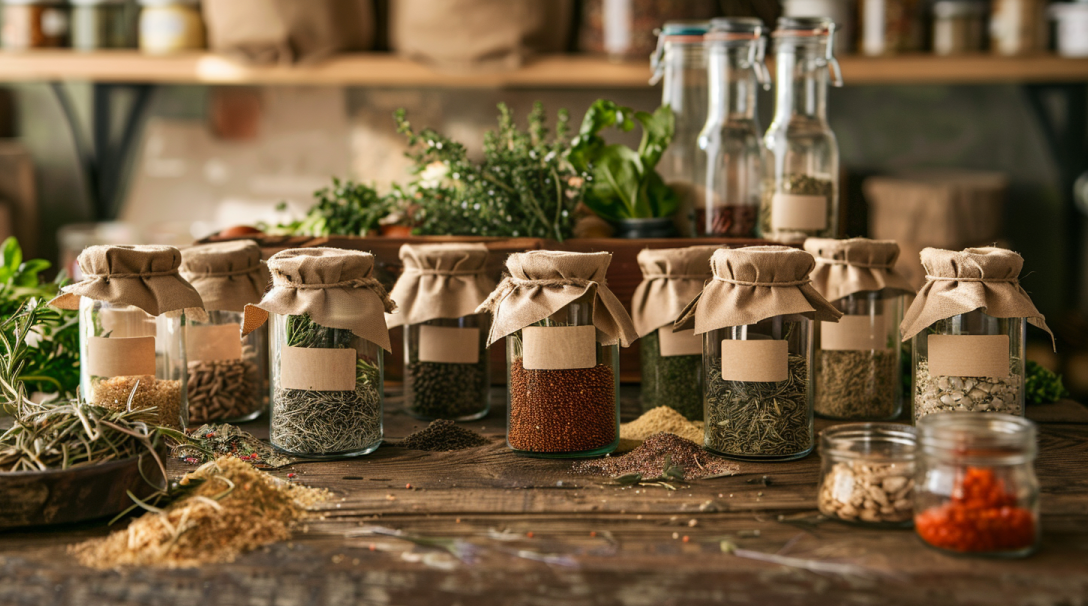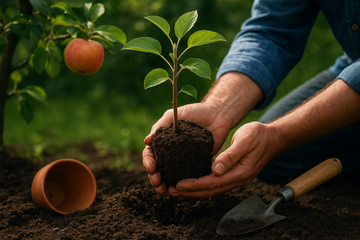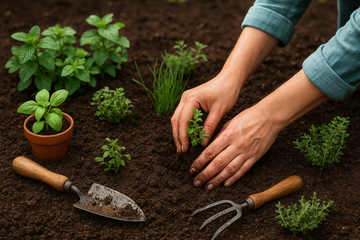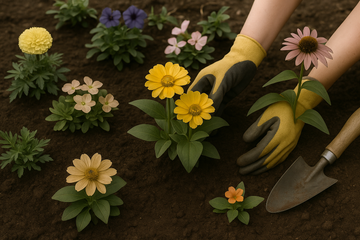Buying seeds for your garden is an exciting part of planning the growing season — but what happens when you have leftover seeds at the end of planting? Maybe you bought extra packets of vegetable seeds, experimented with rare flower seeds, or picked up a few too many organic seed varieties on sale.
The good news? With proper storage, many seeds can stay viable for years. That means you can plant them next season (or even several years later) without worrying about poor germination rates — saving money and preserving special varieties for the future.
In this comprehensive guide, we’ll cover everything you need to know about how to store and preserve seeds for next season, including:
-
Understanding seed viability and shelf life.
-
Preparing seeds for storage.
-
Choosing the right storage containers.
-
Finding the ideal storage location.
-
Testing old seeds before planting.
Whether you’re a beginner gardener or a seasoned grower, these seed storage tips will help you protect your investment and keep your garden thriving year after year.
1. Why Proper Seed Storage Matters
Seeds are living organisms, even though they look dormant. Inside every seed is a living embryo surrounded by stored nutrients, waiting for the right conditions to grow. The way you store seeds directly affects their viability — the percentage that will sprout when planted.
Without proper storage, seeds can:
-
Lose germination ability.
-
Become moldy or rot due to excess moisture.
-
Suffer damage from pests like insects or rodents.
-
Be weakened by temperature fluctuations or exposure to light.
By storing seeds correctly, you:
-
Save money by using leftover seeds instead of buying new every year.
-
Preserve rare or heirloom varieties that may be hard to find again.
-
Have a ready seed supply for emergency planting or succession sowing.
-
Encourage bulk seed purchases, knowing you can store what you don’t use immediately.
💡 Tip: At Seedschoice.com, we sell a wide range of vegetable seeds, flower seeds, herbs, fruits, and organic seeds in bulk-friendly packaging — perfect for gardeners who want to buy once and plant for multiple seasons.
2. Understanding Seed Viability
Seed viability refers to how capable a seed is of sprouting under ideal conditions. Even with perfect storage, seeds don’t last forever — each plant type has its own average shelf life.
Average Seed Lifespans
(When stored under ideal conditions — cool, dry, and dark)
-
Short-lived seeds (1–2 years): Onion, parsley, parsnip, sweet corn, spinach.
-
Moderate (3–4 years): Beans, carrots, peas, peppers.
-
Long-lived (5+ years): Tomatoes, cucumbers, melons, brassicas, lettuce.
-
Flower seeds: Many annual flowers (e.g., marigolds, zinnias) last 3–5 years; perennials may vary.
-
Herb seeds: Basil and chives last ~3 years; mint seeds often last longer.
What affects seed longevity?
-
Moisture: High humidity triggers premature germination or mold.
-
Heat: High temperatures speed up deterioration.
-
Light: Exposure to sunlight can degrade seed quality.
-
Pests: Rodents and insects can eat or damage seeds.
At Seedschoice.com, all our seeds are fresh for maximum shelf life.
3. Preparing Seeds for Storage

Before storing seeds — whether leftover from a packet or saved from your own plants — make sure they’re clean, dry, and labeled.
A. For Leftover Packaged Seeds
-
Keep seeds in their original packets whenever possible — they include important information like variety name, sowing instructions, and packing date.
-
If the packet is torn, place it inside a small paper envelope, then into an airtight container.
B. For Seeds You’ve Saved from Your Garden
-
Clean seeds by removing plant debris, chaff, or pulp. For wet seeds like tomatoes or cucumbers, rinse and ferment if needed before drying.
-
Dry seeds completely — moisture is the #1 enemy of long-term storage. Spread seeds in a single layer on a paper towel or mesh screen in a cool, dry place for 1–2 weeks.
-
Test dryness: A fully dry seed should snap cleanly instead of bending.
C. Label Everything
Include:
-
Plant name & variety.
-
Date of harvest or packaging.
-
Any special notes (e.g., “organic,” “heirloom,” or source).
💡 Pro tip: Organic seeds often store longer because they’re untreated — but must be kept bone dry to prevent mold.
4. Choosing the Best Storage Containers
The right container keeps seeds dry, pest-free, and protected from light.
Popular Storage Options
-
Airtight glass jars (mason jars) → Classic choice for keeping out moisture and pests.
-
Plastic containers with snap lids → Lightweight and stackable.
-
Mylar bags → Ideal for long-term storage; use with oxygen absorbers.
-
Vacuum-sealed bags → Great for bulk seed storage.
-
Small paper envelopes inside a larger sealed container → Allows airflow around each seed type while keeping overall humidity low.
Moisture Control
-
Add silica gel packets or a spoonful of uncooked rice in a cloth bag to absorb moisture.
-
Replace moisture absorbers yearly for best results.
For long-term heirloom seed preservation, visit our Seeds by Solution category for varieties ideal for storage.
5. Finding the Perfect Storage Location
Even the best container won’t help if seeds are stored in the wrong place. Follow the “cool, dark, dry” rule.
Ideal Locations
-
Pantries, closets, or drawers in a temperature-controlled room.
-
Basements — if low humidity.
-
Refrigerator — especially for very long-term storage of rare seeds. Keep in airtight containers to prevent condensation.
Places to Avoid
-
Near ovens or heating vents (heat shortens seed life).
-
In sunny windowsills (light + heat is harmful).
-
Damp basements or garages (high humidity).
💡 Pro tip: If using a fridge, place seeds toward the back where temperatures are most stable.
6. Testing Old Seeds Before Planting
Not sure if last year’s seeds are still good? A germination test can save you time and disappointment.
How to Do a Paper Towel Germination Test

-
Moisten a paper towel (damp, not dripping).
-
Place 10 seeds evenly on the towel.
-
Fold the towel over the seeds, place in a plastic bag, and keep in a warm place (65–75°F / 18–24°C).
-
Check daily and count how many seeds sprout within the expected germination period.
Germination Rate Formula:
-
80–100% → Seeds are strong and ready to plant.
-
50–79% → Still usable, but sow extra seeds.
-
Under 50% → Replace with fresh seeds.
Refresh your seed stock with vegetable seeds, flower seeds, herbs seeds, or fruits seeds.
7. Long-Term Seed Preservation for Bulk Buyers
If you like buying seeds in large quantities, proper storage makes it possible to plant them over several years without losing quality.
Tips for Bulk Storage
-
Split bulk seeds into smaller airtight containers so you only open what you need each season.
-
Store in a cool location (below 50°F if possible).
-
Use oxygen absorbers in each container.
Buying in bulk from Seedschoice.com is cost-effective, especially when you know how to store seeds properly.
FAQ: How to Store and Preserve Seeds for Next Season
Q: How long can seeds last if stored properly?
A: Depending on the plant type and storage conditions, seeds can last anywhere from 1 to 5+ years. Some, like tomatoes and lettuce, can remain viable for up to a decade in ideal conditions.
Q: Should seeds be stored in the freezer?
A: Freezing can extend seed life for certain types, but only if seeds are completely dry. Any residual moisture can damage the embryo.
Q: Can I store seeds in the fridge?
A: Yes — the fridge is a good option if seeds are in airtight containers with moisture absorbers. Avoid storing in the door where temperature fluctuates.
Q: How do I know if old seeds will germinate?
A: Use the paper towel germination test described above to check viability before planting.
Conclusion – Protect Your Seeds, Protect Your Garden
Learning how to store and preserve seeds for next season is a valuable skill for any gardener. With the right preparation, storage containers, and location, you can keep seeds viable for years — saving money, preserving rare varieties, and ensuring you always have the perfect seeds for your garden.
Whether you’re tucking away leftover packets or saving seeds from your harvest, Seedschoice.com has the quality seeds you can trust to last season after season.
Shop now and prepare for next year’s garden:
Your seeds are an investment — store them right, and they’ll reward you with strong, healthy plants for years to come.












